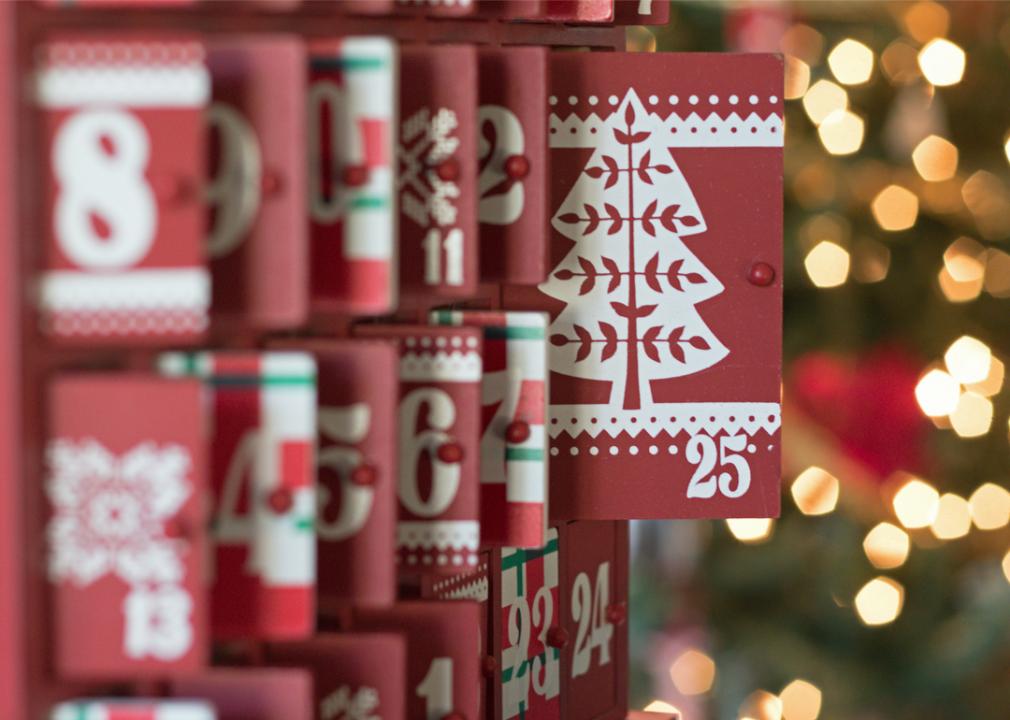How Christmas is celebrated around the world
Published 7:00 am Thursday, November 18, 2021
jan j. photography// Shutterstock
How Christmas is celebrated around the world
Cultures around the world have celebrated the midwinter end of the season’s darkest days and rebirth of new life for centuries. Now, in much of the world, it’s simply known as Christmastime. While much of the West celebrates Christmas with nativity scenes, church services, candy canes, and Santa Claus, the world is filled with a seemingly endless variety of Christmas traditions, feasts, celebrations, and rituals.
For many people, Christmas falls on Dec. 25, but hundreds of millions of Orthodox Christians celebrate on Jan. 7. Some people and cultures follow traditional religious themes, others incorporate folklore or regional customs, while other Christmas celebrations are entirely secular. These 30 traditions from around the world have one thing in common: they’re all about Christmas.
Read on to learn about how Christmas is celebrated around the world—perhaps it will inspire new traditions your family.
You may also like: Do you know your state nicknames?
![]()
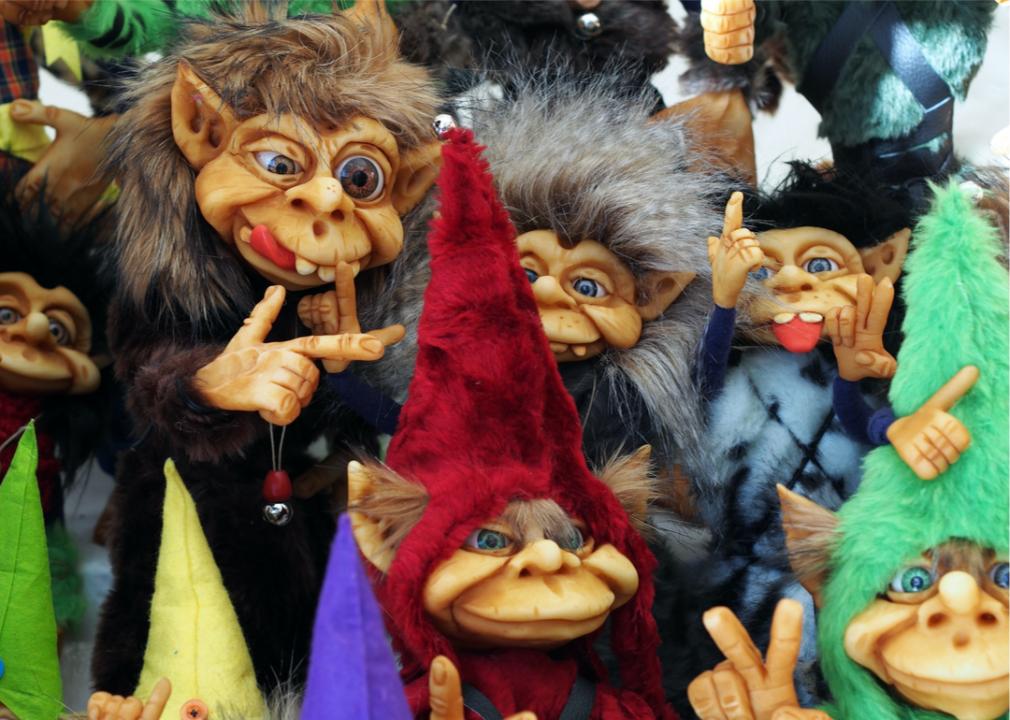
Iness_la_luz // Shutterstock
Iceland: 13 Yule Lads
In Iceland, Christmas includes a blend of religious and regional folklore. Traditions like gift-giving are familiar, but instead of a single Santa Claus-esque figure, Icelandic children are visited by 13 trolls known as the Yule Lads. Each troll leaves either sweets or rotten potatoes each night, depending on whether or not the child has been on their best behavior.
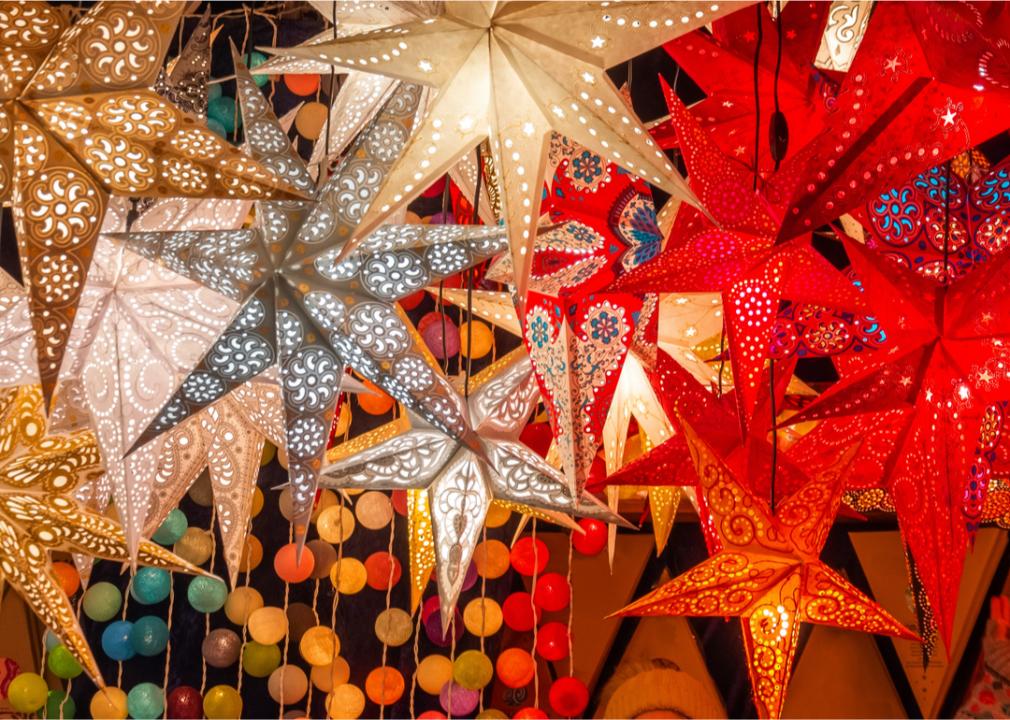
aapsky // Shutterstock
Philippines: Giant Lantern Festival
The city of San Fernando is known locally as the Christmas capital of the Philippines, thanks to its colorful, glowing “parol of star” ornament. The ornament is central in the Giant Lantern Festival, which began in the early 1900s, but really took off in 1931 when the city got electricity. Each neighborhood fashions its own massive lantern through a collective effort, and all the lanterns are fastened together before Christmas.
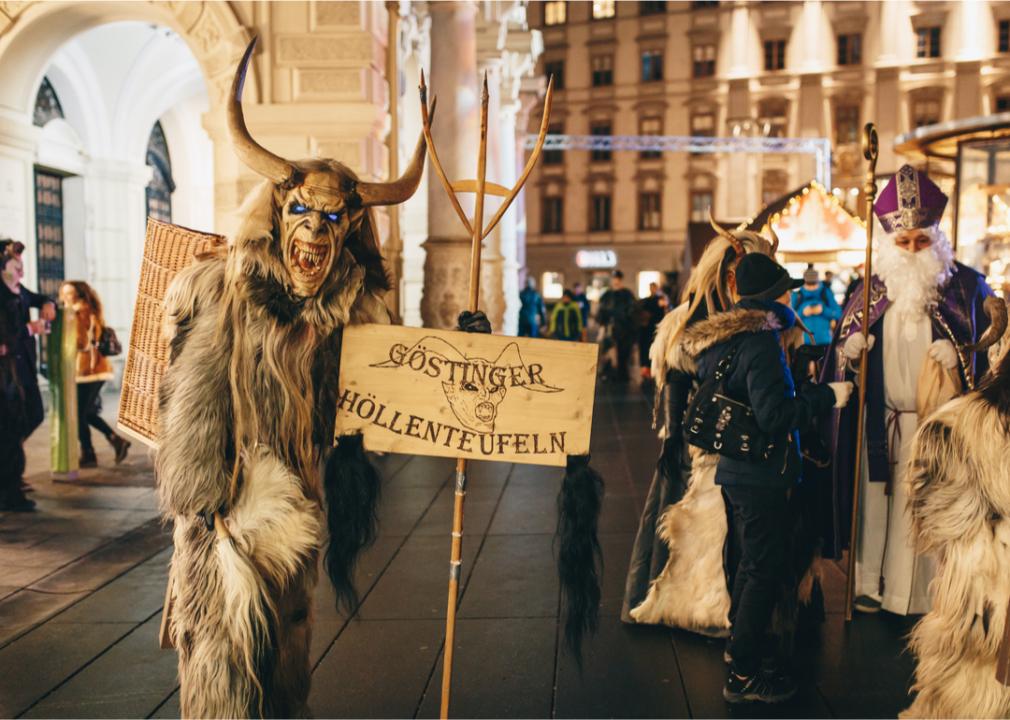
Calin Stan // Shutterstock
Austria: Krampus
One of the less-festive Christmas legends is the story of Krampus, Santa’s evil counterpart, who Austrian children believe will whisk them away in a basket if they’re naughty. Each year, people dress up in their scariest Krampus costumes, and terrify onlookers in Hollabrunn Market Square.
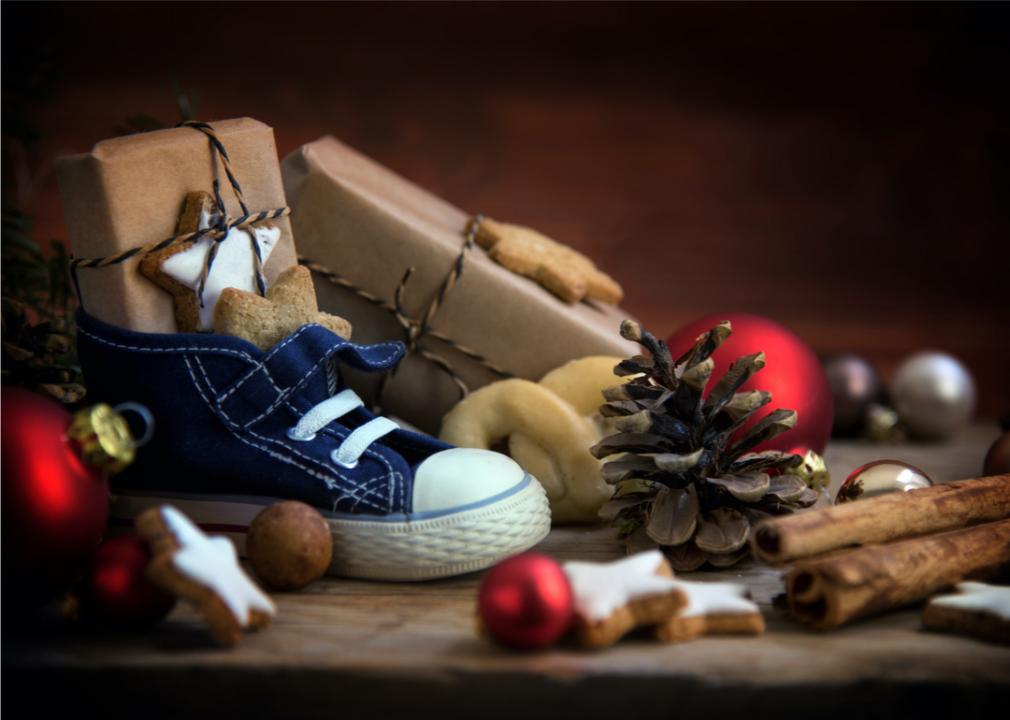
Maren Winter // Shutterstock
Germany: St. Nicholas Day
In Germany, Santa Claus generally still takes the appearance of the traditional Roman Catholic bishop St. Nicholas. Kids prepare for his arrival by placing freshly polished boots outside their doors, along with carrots for the bishop’s horse. On Dec. 6, St. Nicholas Day, the bishop goes house to house with a book describing the children’s deeds. Depending on whether they were naughty or nice, he fills their boots with either something good, like sweets, or something not so good, like twigs.
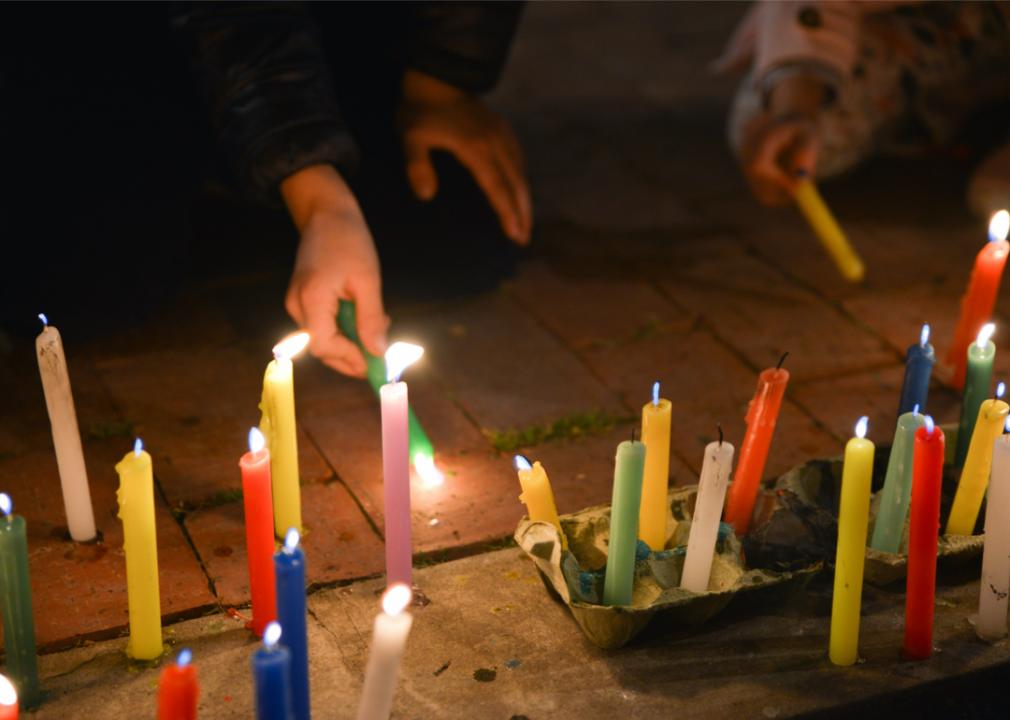
Ana Duque // Shutterstock
Colombia: Day of the Little Candles
A sea of lights marks the start of the Christmas season in Colombia, on the eve of the Immaculate Conception. Inside and outdoors, everything from paper lanterns and votive candles to massive candle pillars are lit for Día de las Velitas, or Day of the Little Candles.
You may also like: Where U.S. first ladies went to college
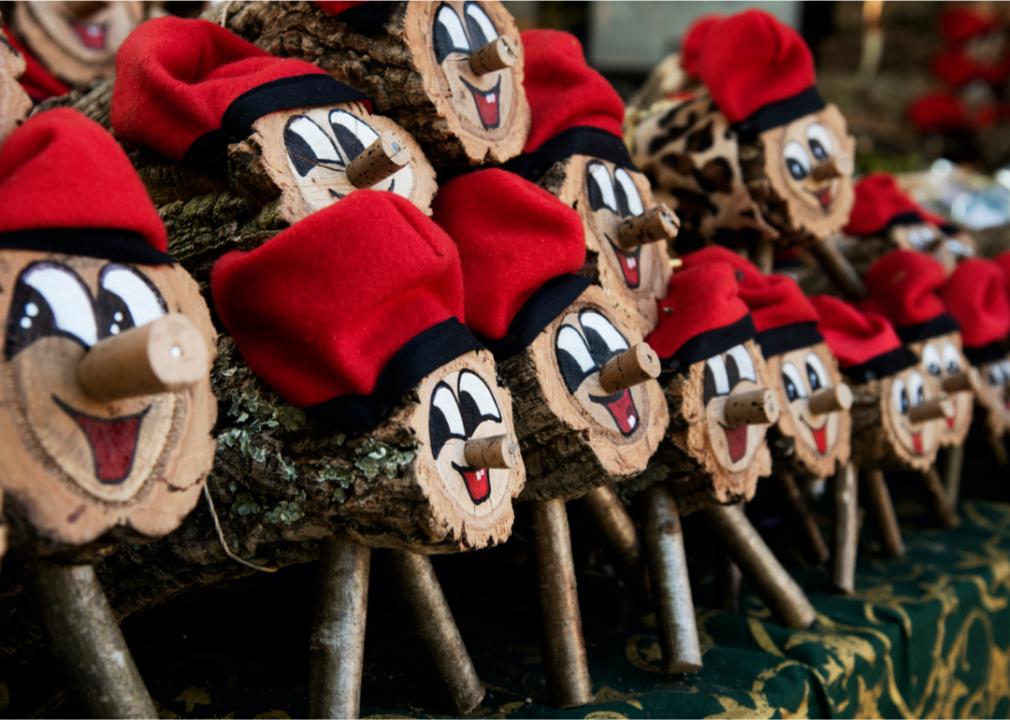
nito // Shutterstock
Catalonia: Caga Tio
Caga Tio is certainly one of the world’s more unusual Christmas traditions. Caga Tio is a log that children feed scraps of food. As a show of gratitude, Caga Tio “poops” out presents when children hit it with a stick while singing the traditional Caga Tio song.
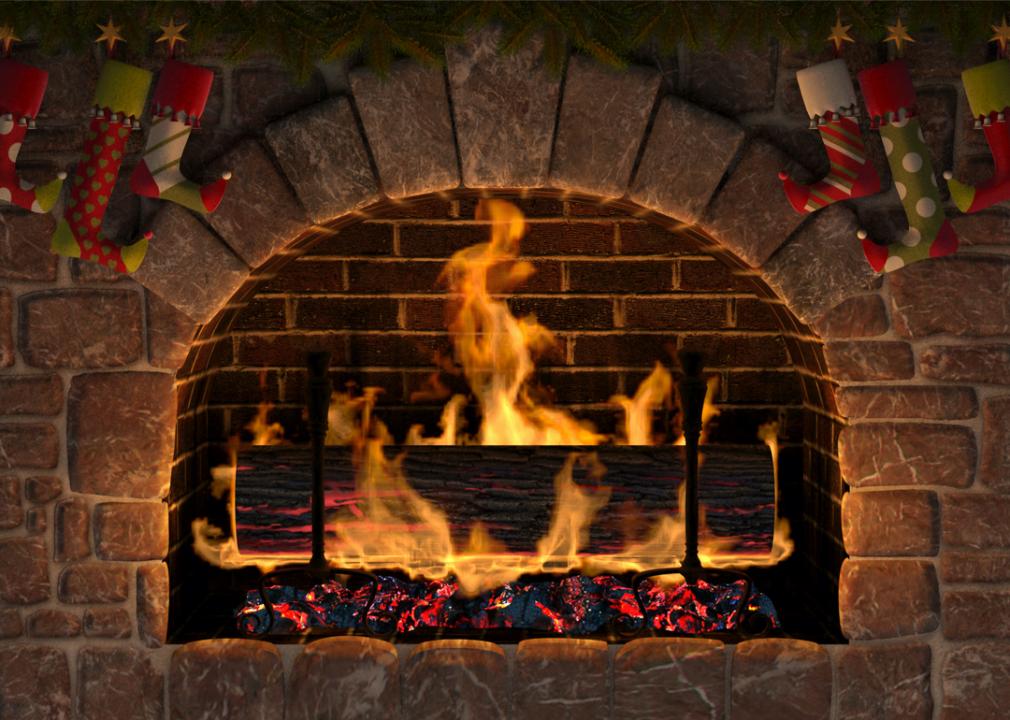
Pta Pta // Shutterstock
New York City: Televised Yule log
One of New York City’s most enduring Christmas traditions is the televised burning of the WPIX yule log. The broadcast debuted on Christmas Eve 1966, live from Gracie Mansion, and was re-filmed in 1970. That’s the version revelers have been watching every year since.
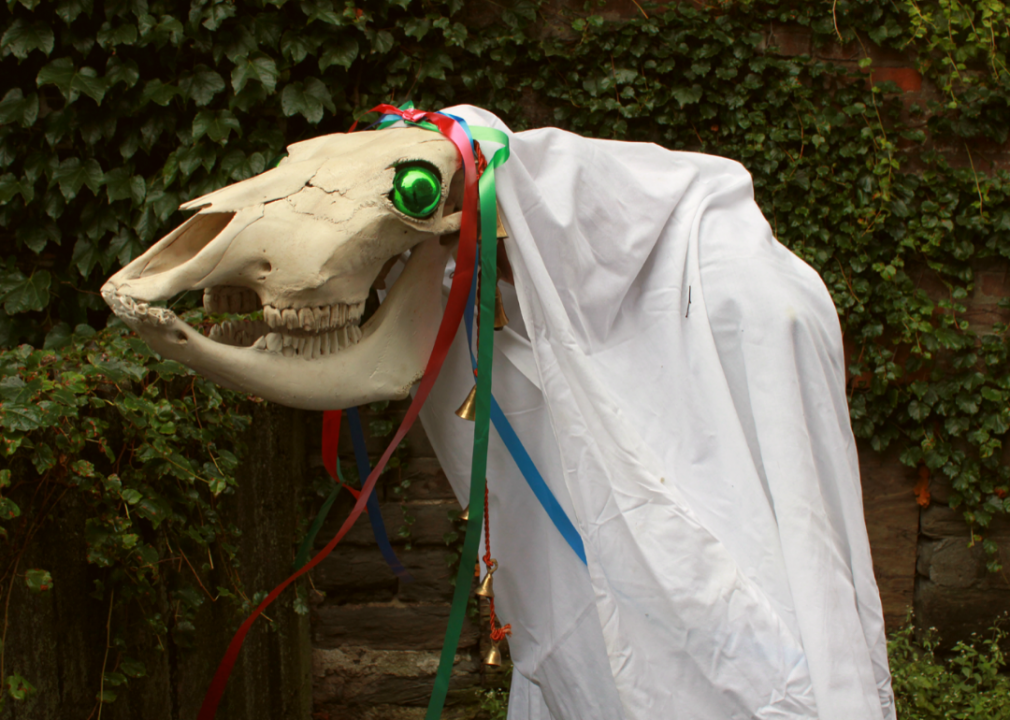
R. fiend // Wikimedia Commons
Wales: Mari Lwyd
Translated as “gray mare,” the Mari Lwyd tradition dates back before the adaptation of Christianity. Revelers craft a horse using an actual horse skull, then decorate it, give it reins and bells, drape it in white cloth, and affix it to a pole. Taking the horse door-to-door, they challenge their neighbors to a traditional Welsh insult contest known as pwnco, not unlike a festive rap battle.

ChameleonsEye // Shutterstock
New Zealand: The pohutukawa tree
The first mention of a crimson-flowered Kiwi Christmas tree in New Zealand dates back to an 1833 missionary report. The pohutukawa tree is still an iconic piece of Christmas culture in New Zealand, particularly the ancient specimen perched on a Cape Reinga cliff. Some believe that the souls of the dead travel through the tree to the afterlife.
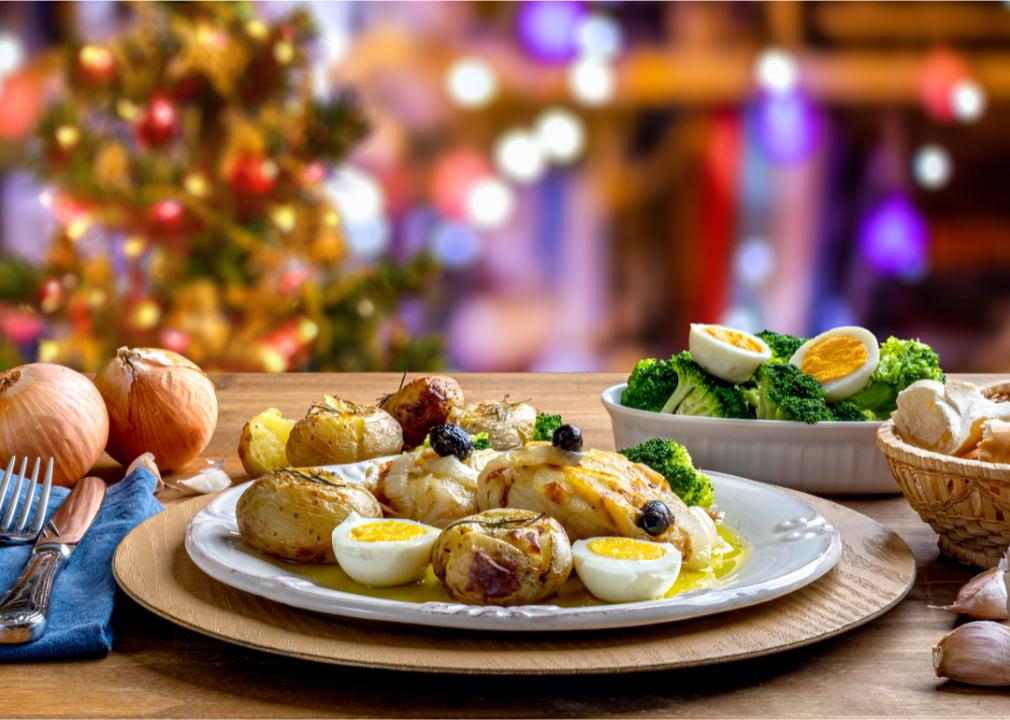
bnetto // Shutterstock
Portugal: Consoada feast
In Portugal, many Catholics still fast before Christmas. After midnight Mass, the fast is broken with the Consoada feast. Signaling the official beginning of Christmas, Consoada consists of meat, pudding, and traditional sweets. Seats are reserved at the table for loved ones who have recently passed away.
You may also like: 50 famous paintings and the stories behind them
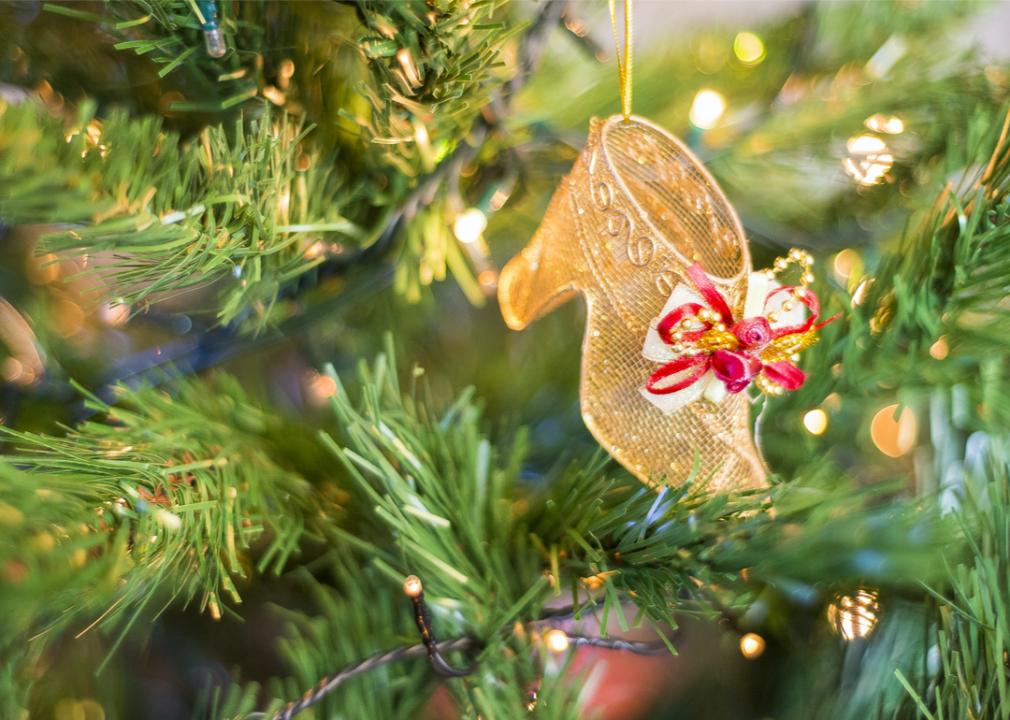
pisaphotography // Shutterstock
Czech Republic: Throwing of the shoe
Shoes are featured prominently in the Christmas traditions of several cultures, including the Czech Republic. On Christmas, girls and young women stand outside their homes and throw a shoe over their shoulders. If the shoe lands with the toe pointing toward the door, they’ll be married soon. If not, they’ll be single for at least another year.
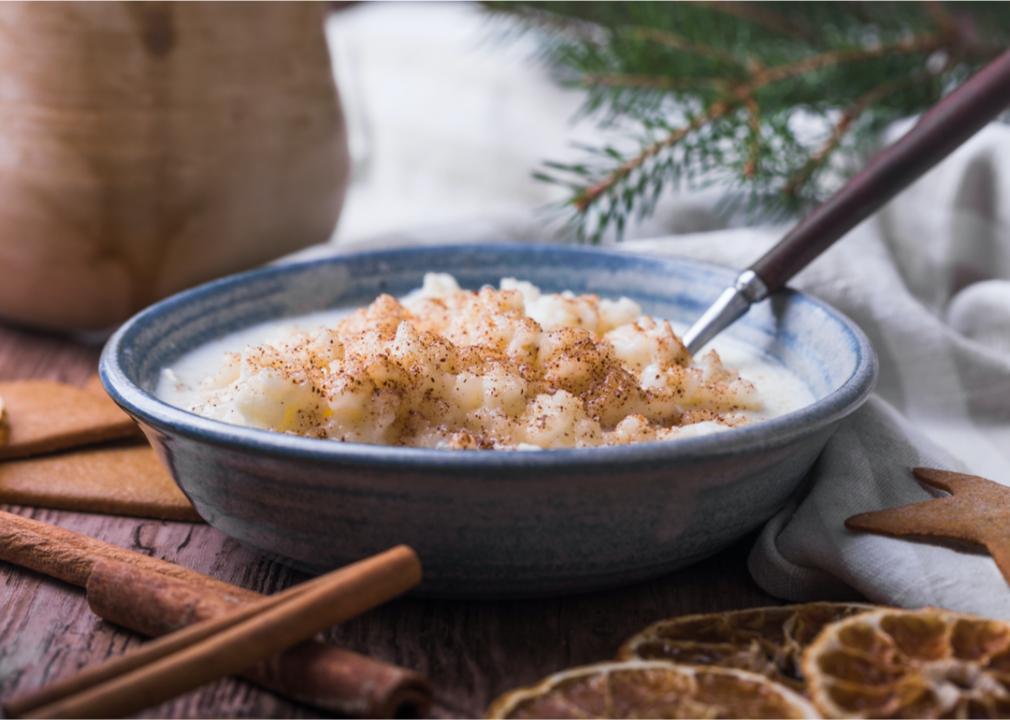
Angela Kotsell // Shutterstock
Sweden: Risgrynsgröt
In Sweden, an almond is hidden in the traditional risgrynsgröt rice pudding. If an unmarried man or woman finds the almond, they’ll find true love soon after. After dinner, a bowl of pudding is placed outside for a Christmas elf who causes mischief if he isn’t fed.
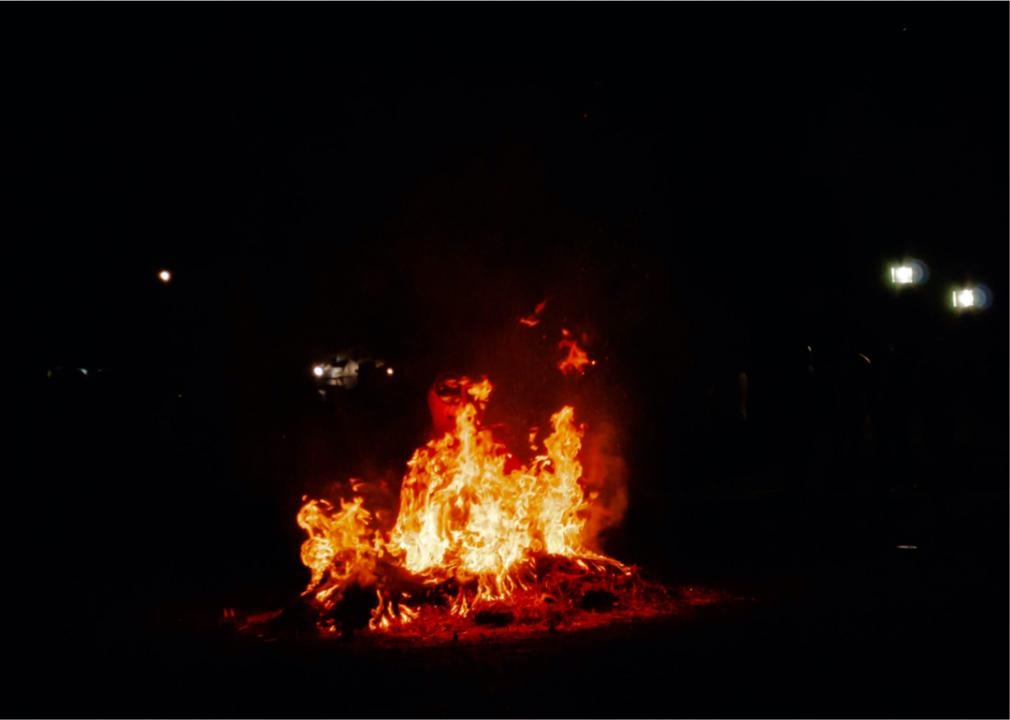
Mokuba90 // Shutterstock
Guatemala: Burning the Devil
About 500,000 fires rage in the capital city of Guatemala on Dec. 7 every year. It’s tradition for families to create an effigy of the devil and set it on fire that night. This tradition has become so common that the government recently asked residents to cut back on the torchings for environmental reasons.
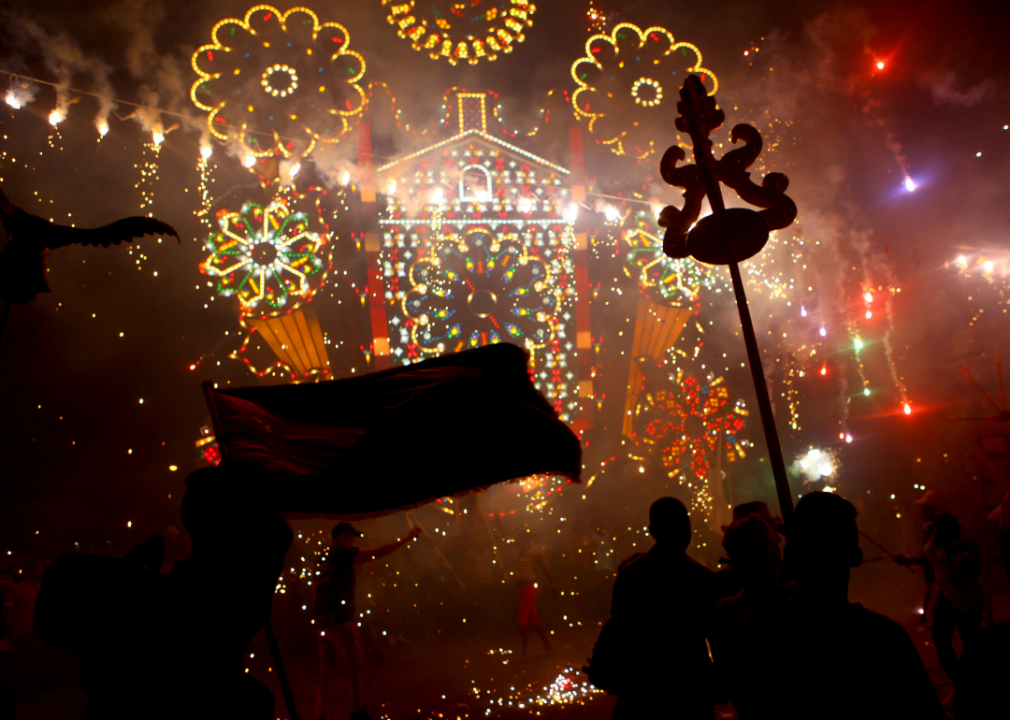
David Silverman // Getty Images
Cuba: Las Parrandas de Remedios
Remedios is the eighth-oldest city in Cuba, and the home of Las Parrandas de Remedios, one of the region’s most popular Christmas celebrations. From Dec. 16 to Dec. 26, rumba dancers, conga groups, and other revelers fill the streets alongside colorful floats for 10 days of fireworks-studded celebration.
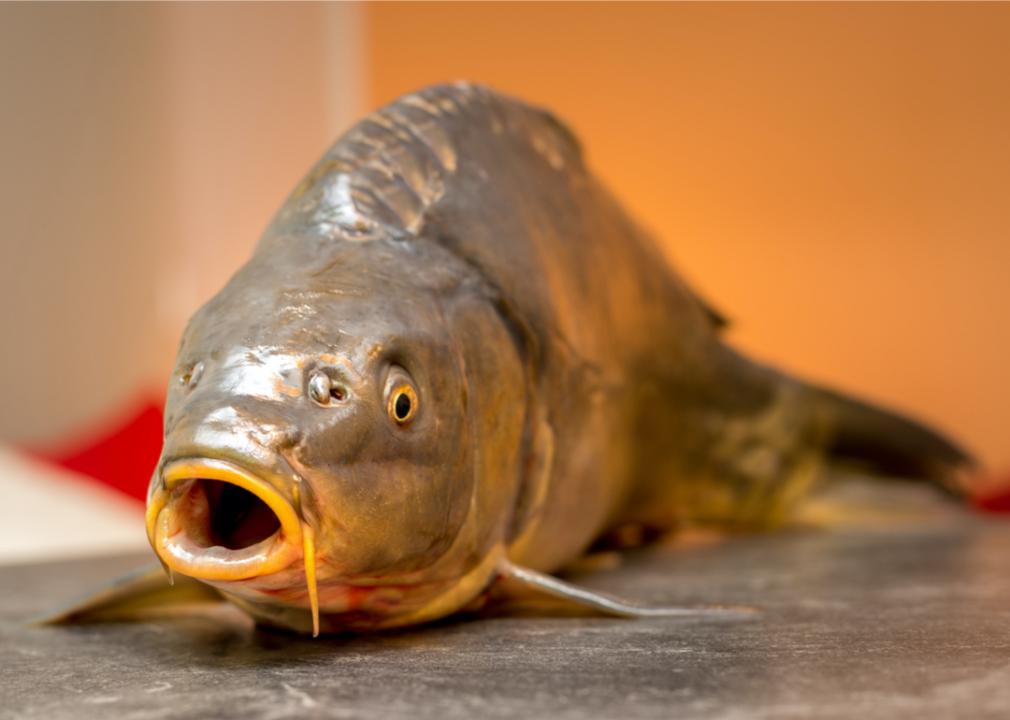
Kojin // Shutterstock
Slovakia: Bathtub carp
There’s nothing odd about eating carp for Christmas dinner in Slovakia; Central Europeans have been doing it for centuries. In Slovakia, however, custom calls for the live carp to swim in the family’s bathtub for a few days before it becomes a Christmas feast. During this time, residents don’t bathe and the doomed fish is named and treated as a pet.
You may also like: Origins of the 50 most popular dog breeds
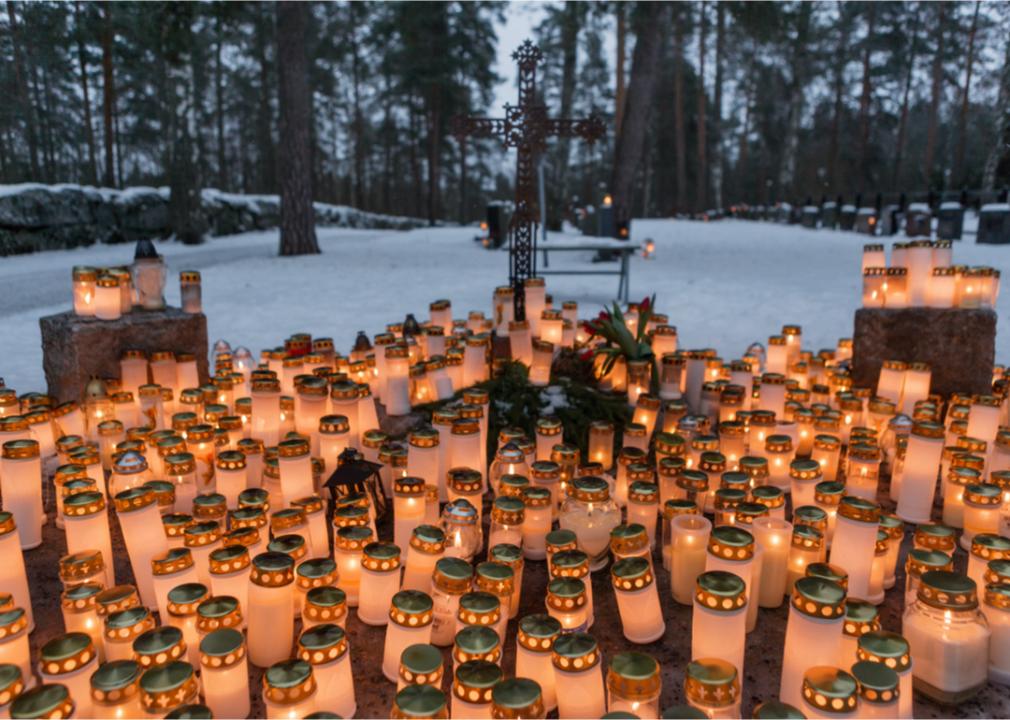
Marco Rimola // Shutterstock
Finland: Candles in the cemetery
About three out of four Finnish families spend part of Christmas Eve in a cemetery. The tradition is actually not as morbid as it sounds—it’s about celebration more than mourning. Families place candles at the graves of loved ones or at special memorials to honor the deceased who are buried elsewhere.
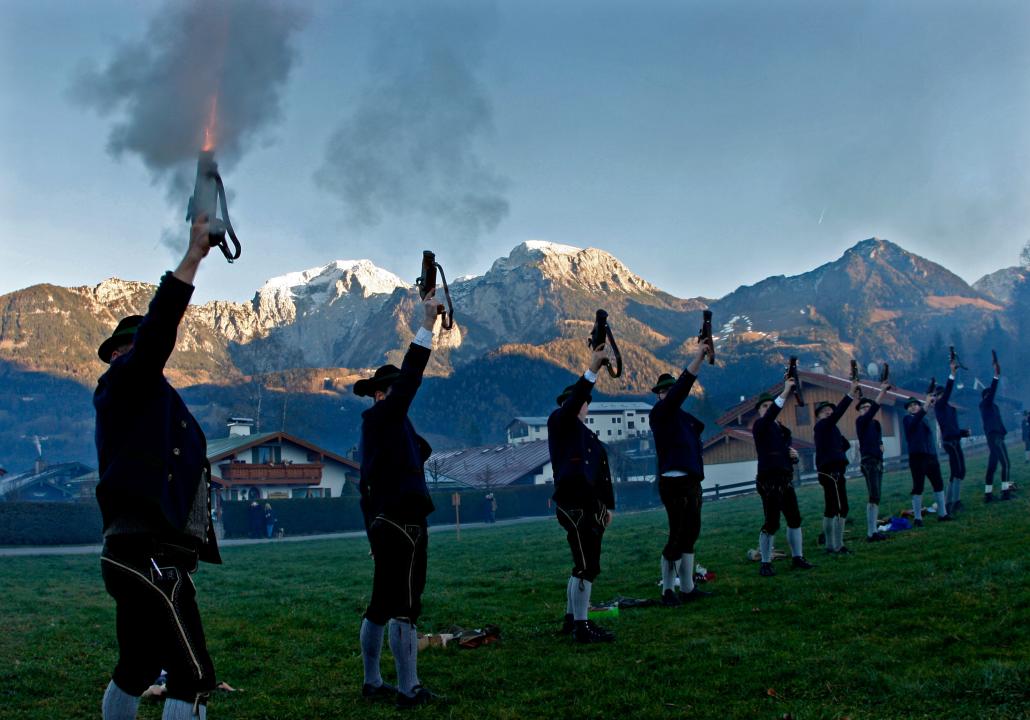
Diether Endlicher/picture alliance via Getty Images
Bavaria: Mortars away
In the German region of Bavaria, Christmas is celebrated with a bang—literally. The Bavarian highlanders dress in lederhosen and other traditional clothing before firing off handheld mortars into the air.
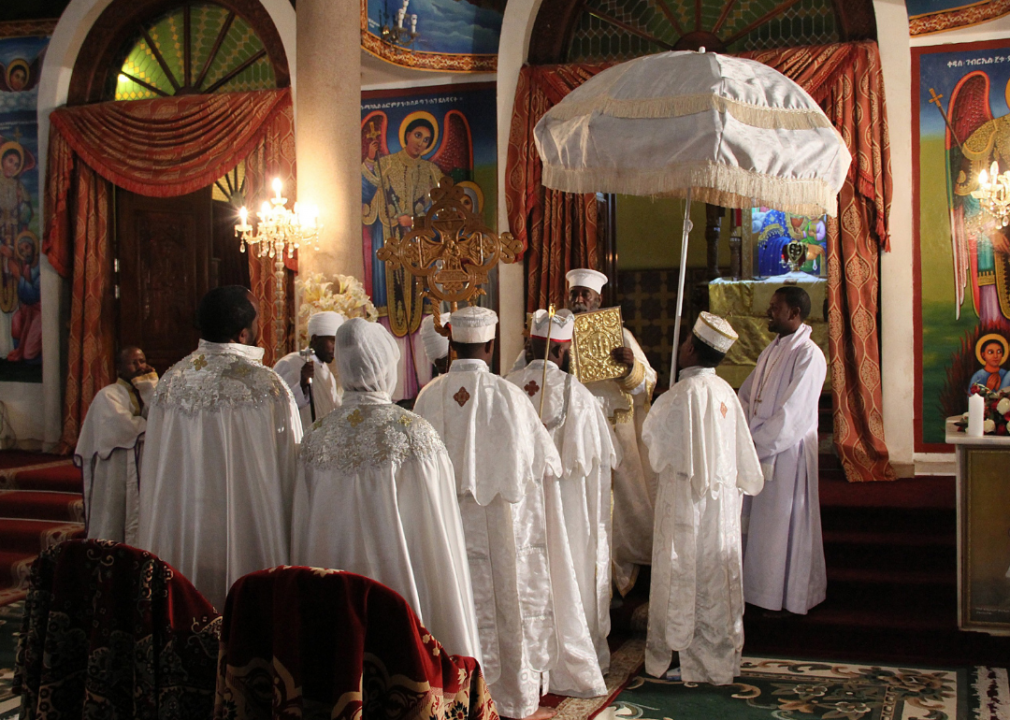
Minasse Wondimu Hailu/Anadolu Agency // Getty Images
Ethiopia: Ganna
Since most of Ethiopia’s Christian community is Orthodox, the nation celebrates Christmas on Jan. 7. The festivities are known collectively as Ganna, where revelers traditionally don white robes adorned with bright stripes on their way to church.
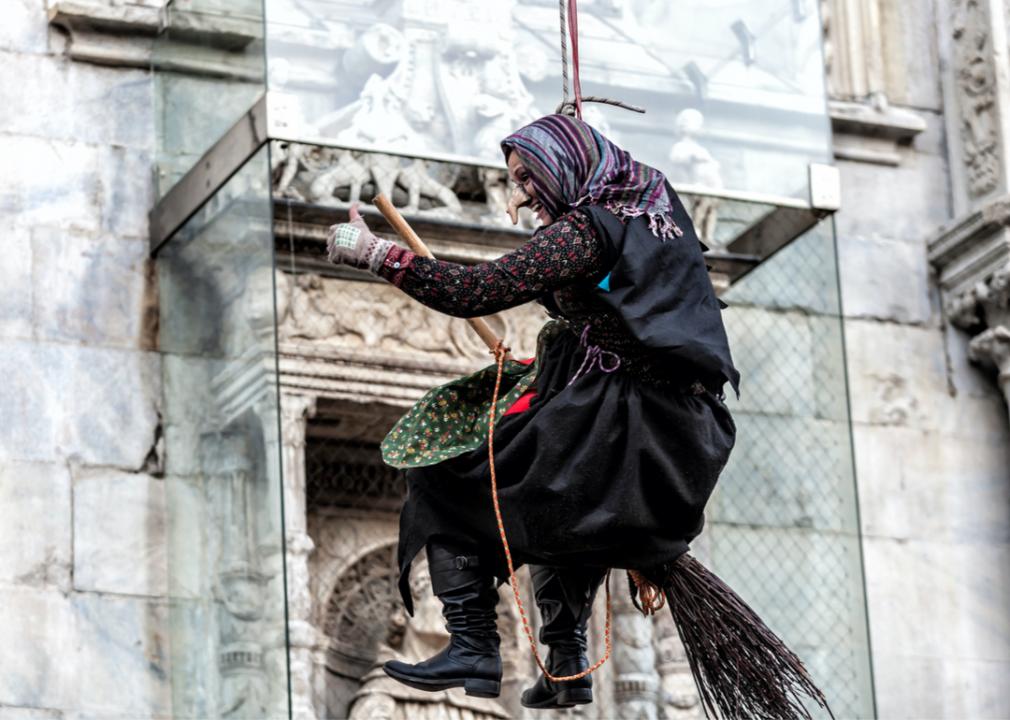
DARRAY // Shutterstock
Italy: La Befana
Italian children believe a magical present-bearer comes down the chimney at night to deliver gifts to nice kids and coal to naughty ones—but it’s not Santa and it’s not on Christmas. Instead, kids hold their breath for Jan. 6, the day of the Epiphany, when they’re visited by La Befana, the beloved Christmas witch.
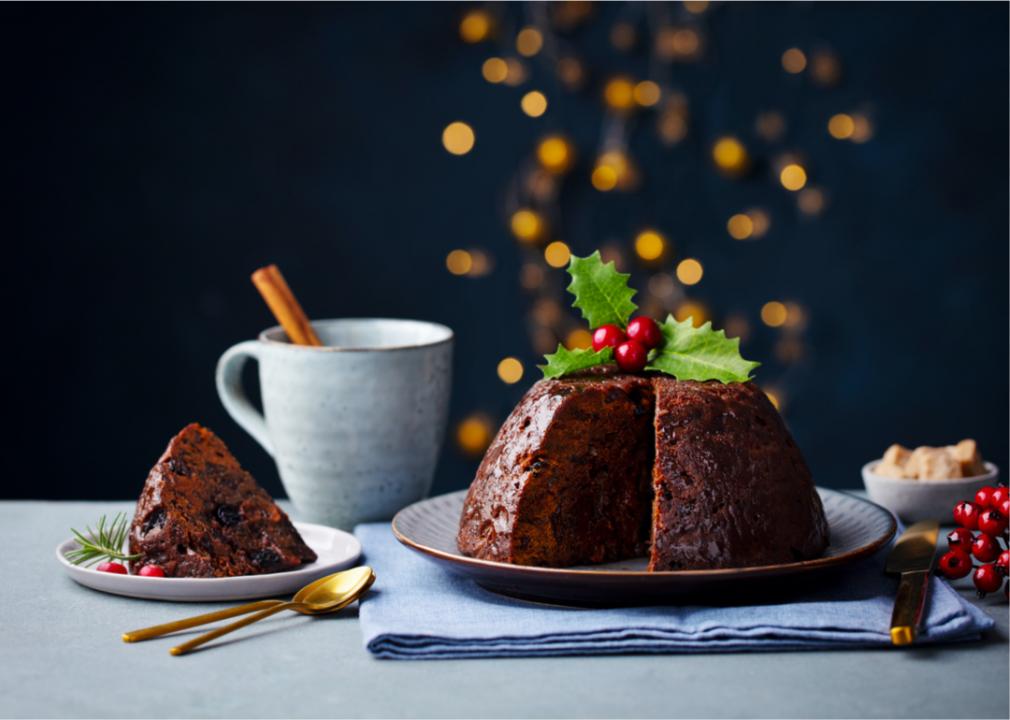
Anna_Pustynnikova // Shutterstock
Great Britain: Stir-up Sunday
Since Victorian times in Great Britain, the Sunday five weeks before Christmas has been known as Stir-up Sunday, where revelers make porridge or pudding with 13 ingredients to represent Jesus and his 12 disciples. Everyone in the family “stirs up” the porridge, reciting related passages from the Book of Common Prayer. Each family member makes a silent Christmas wish while stirring from east to west—the direction the Three Wise Men are said to have traveled.
You may also like: Most popular baby names for boys the year you were born
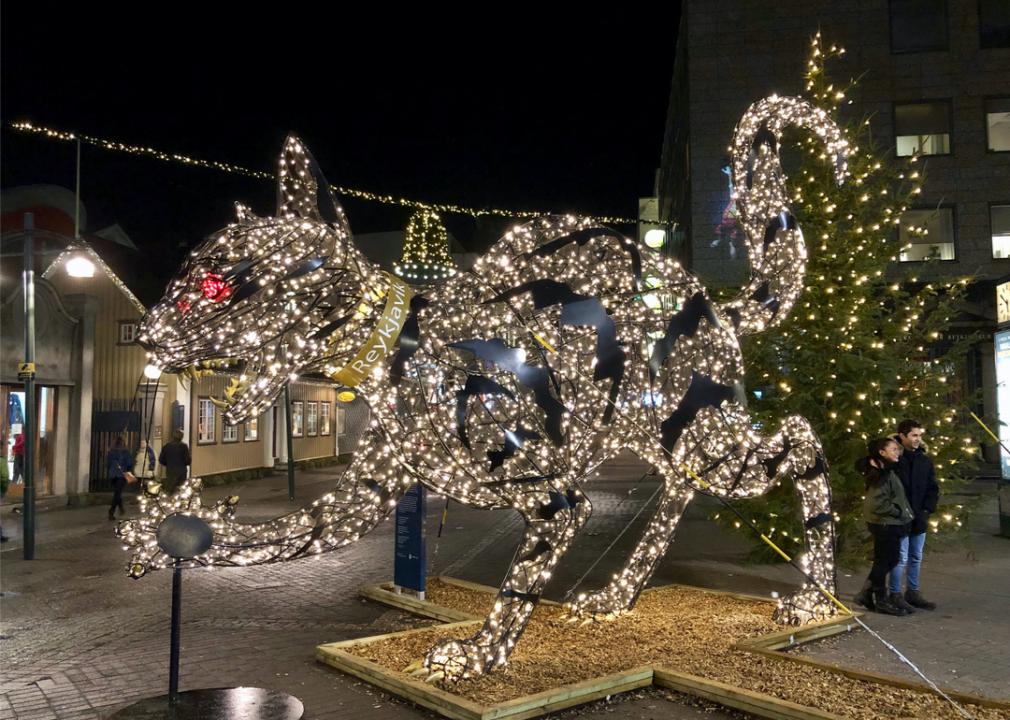
Carolyne Parent // Shutterstock
Iceland: Jólakötturinn the Yule cat
Mythical characters enforcing good behavior have long been a part of Christmas folklore, but they are rarely as severe or fashion-savvy as Jólakötturinn. Known as the Yule Cat, Jólakötturinn is a large feline that stalks the country on Christmas night, eating any child who didn’t receive new clothes as a gift.
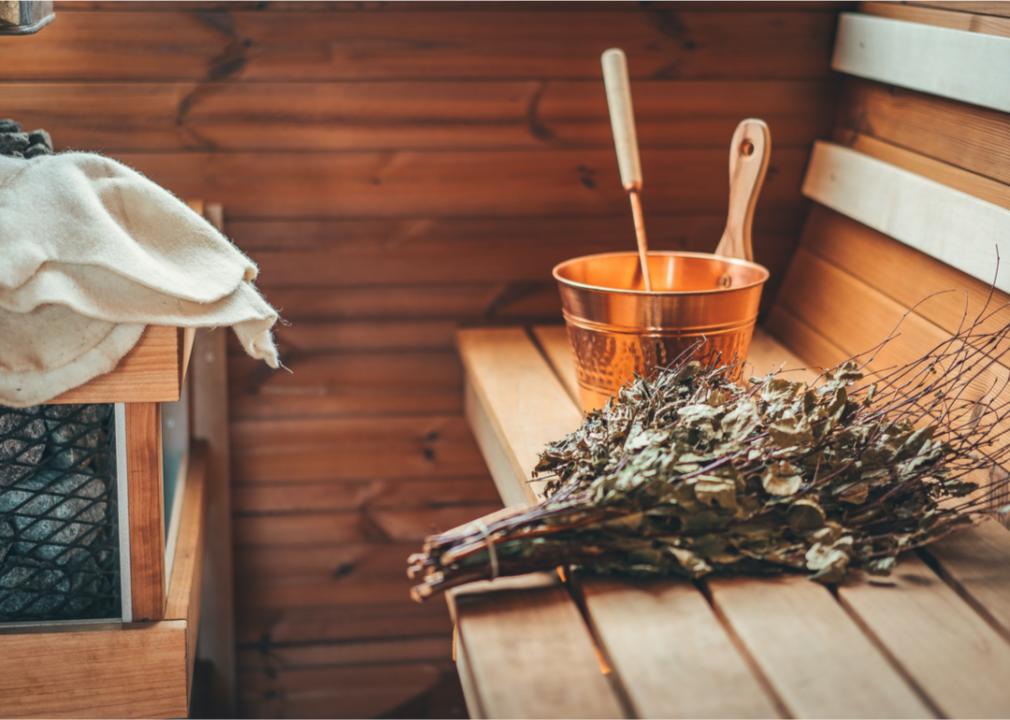
B. Bodzs // Shutterstock
Estonia: Sauna visit
In Estonia, Christmas is a blend of traditional, modern, secular, and religious customs. Among the most important is a visit to the sauna before religious services. There, kids often receive new clothes that they can wear after the sauna to show off at church.
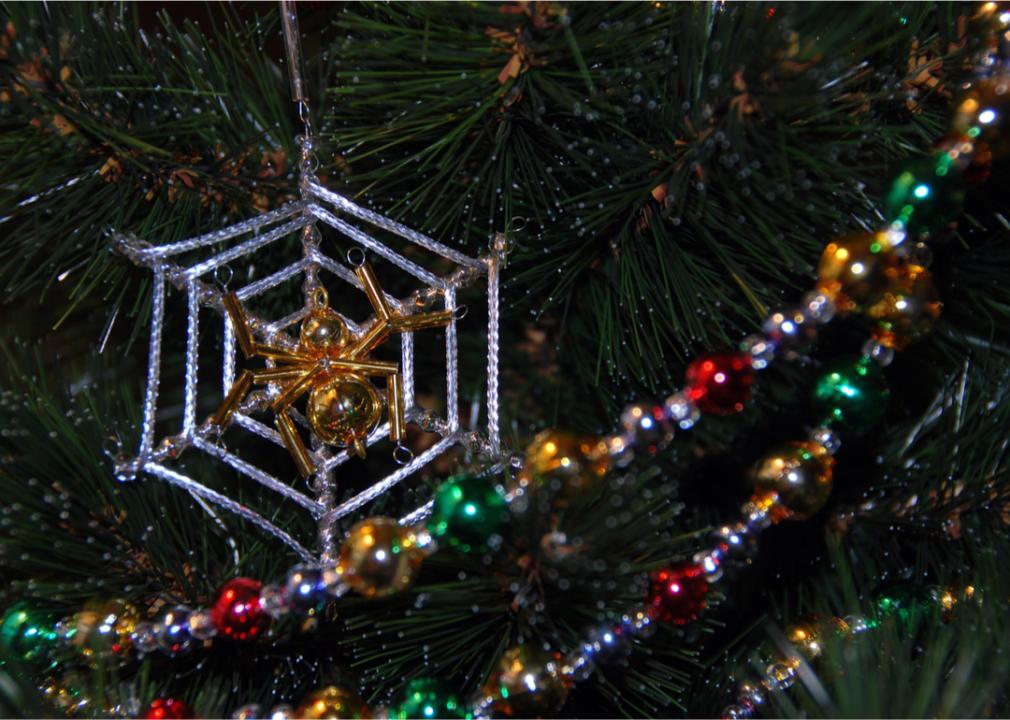
Alyona Raikher // Shutterstock
Ukraine: Spider and the Christmas tree
In America, spider and web decorations are generally reserved for Halloween. In Ukraine however, they’re a symbol of good Christmas fortune. Families adorn Christmas trees with spiderwebs to commemorate a folktale about a family who couldn’t afford ornaments and decorations for their tree. As the tale goes, they woke on Christmas to find spiders had spun beautiful webs around the tree, which sparkled in the sunlight.
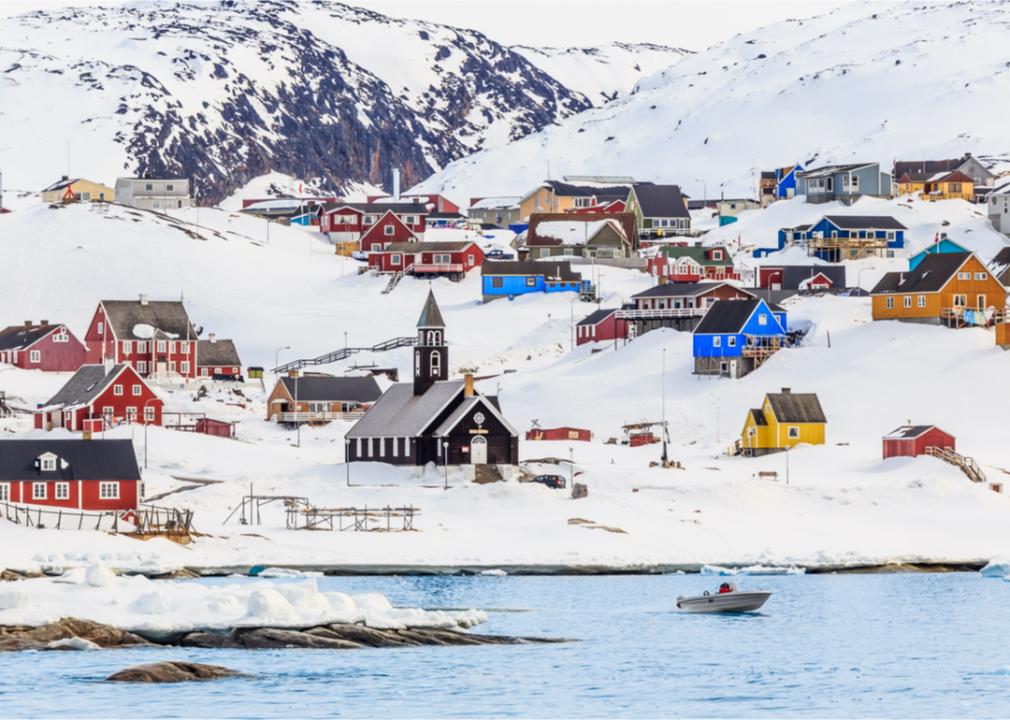
Vadim Nefedoff // Shutterstock
Greenland: Kiviak feast
If you’re ever in Greenland at Christmastime, consider trying a local delicacy called Kiviak, a traditional holiday fare that’s made by fermenting the raw meat of the arctic auk into a sealskin, which is then buried until it reaches a state of decomposition and fermentation.
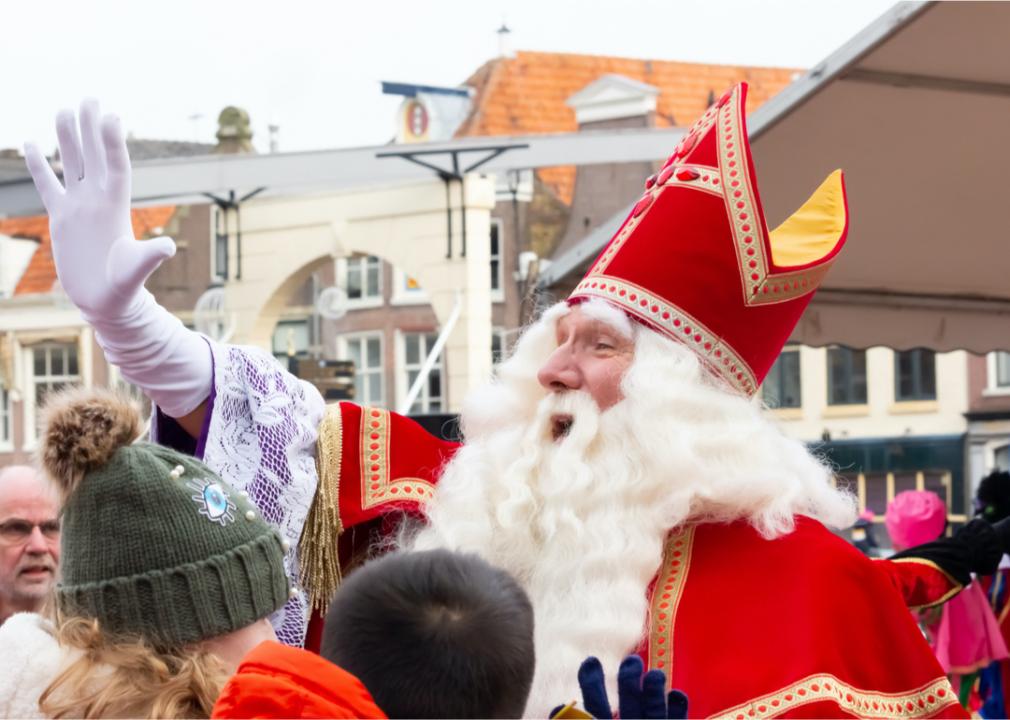
Photos by D // Shutterstock
Netherlands: Zwarte Piet
Zwarte Piet (Black Pete), is, according to the tale, is one of Santa’s helpers. The costumes that celebrate the prominent mythical character require Dutch actors to don what’s known in the United States and other parts of the world as blackface. Antiracism activists have protested the characters, and some schools, localities, and organizations are eliminating the character—or at least the makeup—from their festivities, while others continue the tradition unabated.
You may also like: What marriage was like the year you were born
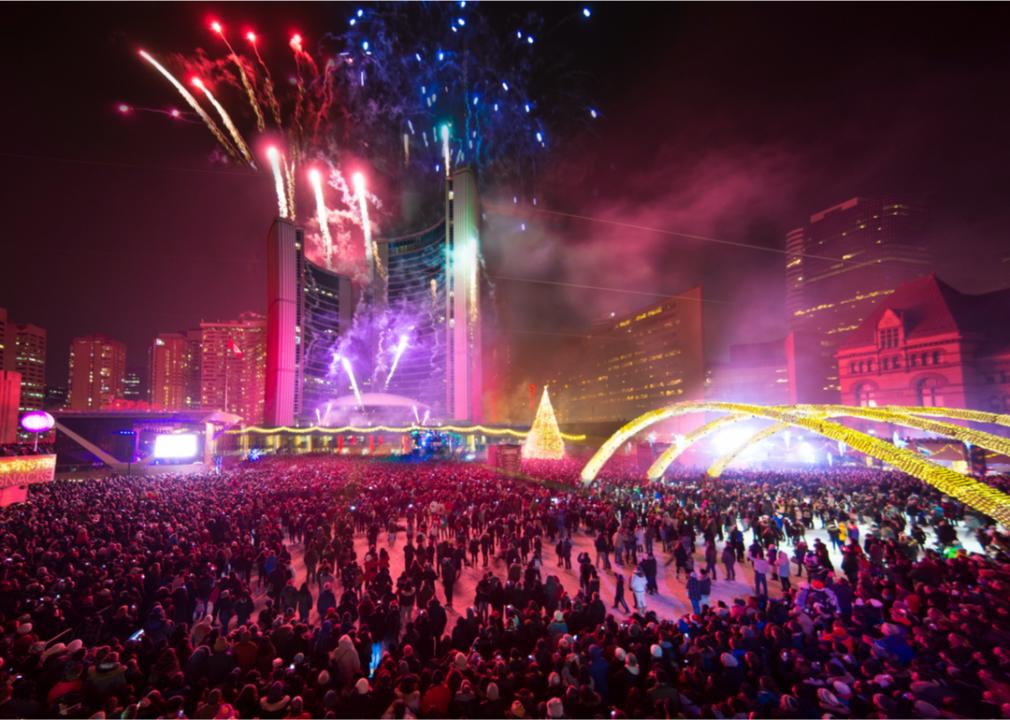
Canadapanda // Shutterstock
Toronto: Cavalcade of lights
In Toronto, revelers launch the Christmas season with a full-fledged party called the Cavalcade of Lights. Lighting of the city’s Christmas tree is traditionally the backdrop for a bash that includes music, refreshments, ice-skating, and, of course, enough lights to be seen for miles.
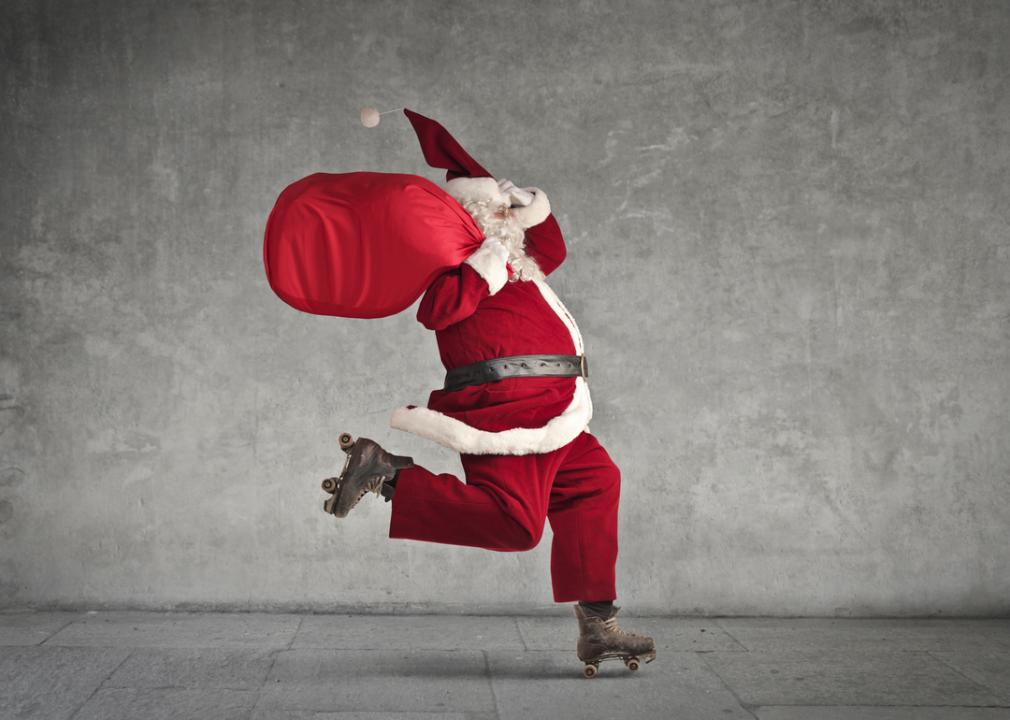
Ollyy // Shutterstock
Venezuela: Skating to Mass
There’s nothing unusual about Catholics heading to Mass on Christmas Eve—unless you’re celebrating in Venezuela. Many dress in Santa attire or don wacky hats, then glide to church on roller skates as fireworks light up the sky.
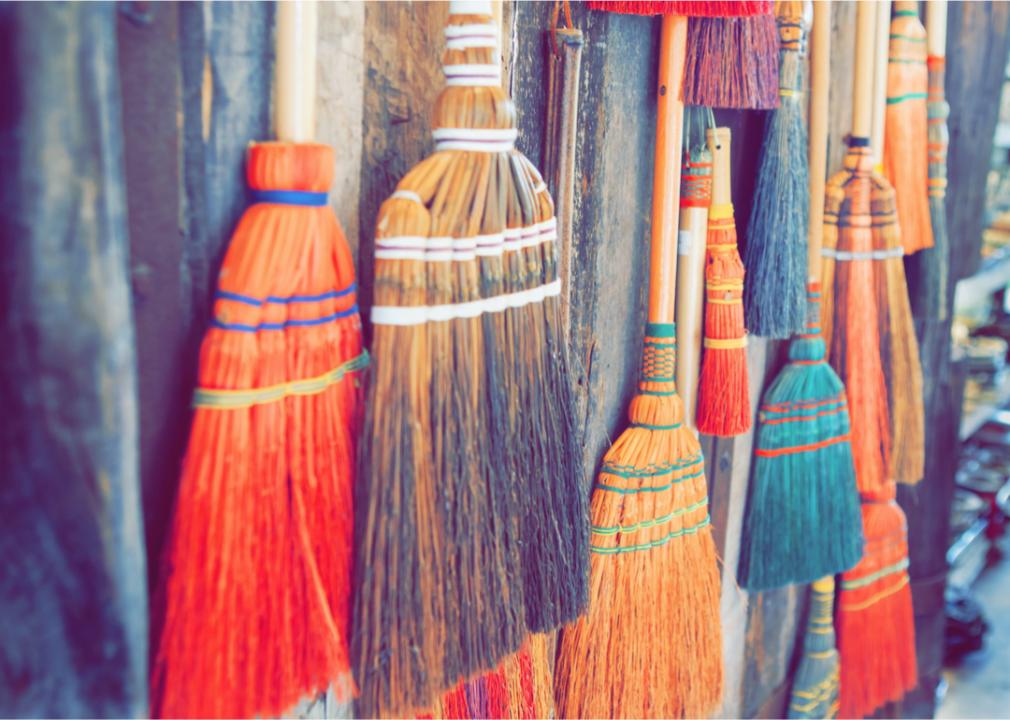
M0M0TaR0 // Shutterstock
Norway: Hiding of the brooms
In Norway, legend has it that witches arrive on Christmas Eve. Norwegians traditionally hide their brooms on this night to deny the witches their preferred mode of transportation.
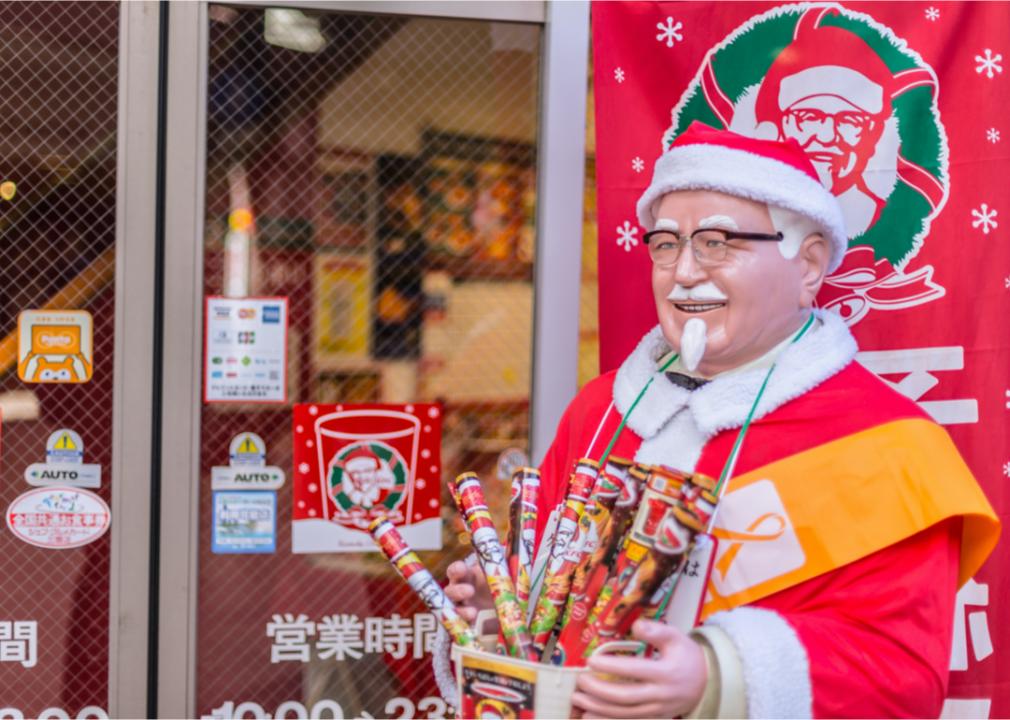
Quality Stock Arts // Shutterstock
Japan: Kentucky Fried Christmas
One of the world’s more curious Christmas traditions involves fried chicken—KFC, specifically. The fast-food joint is a favorite in Japan, and nearly 4 million Japanese people eat it on Christmas, which isn’t a prominent holiday in Japan. In 1970, the country’s first KFC franchisee filled the void by offering Christmas chicken “barrels” on Dec. 25, complete with a marketing blitz that caught on quickly and continues to dominate to this day.
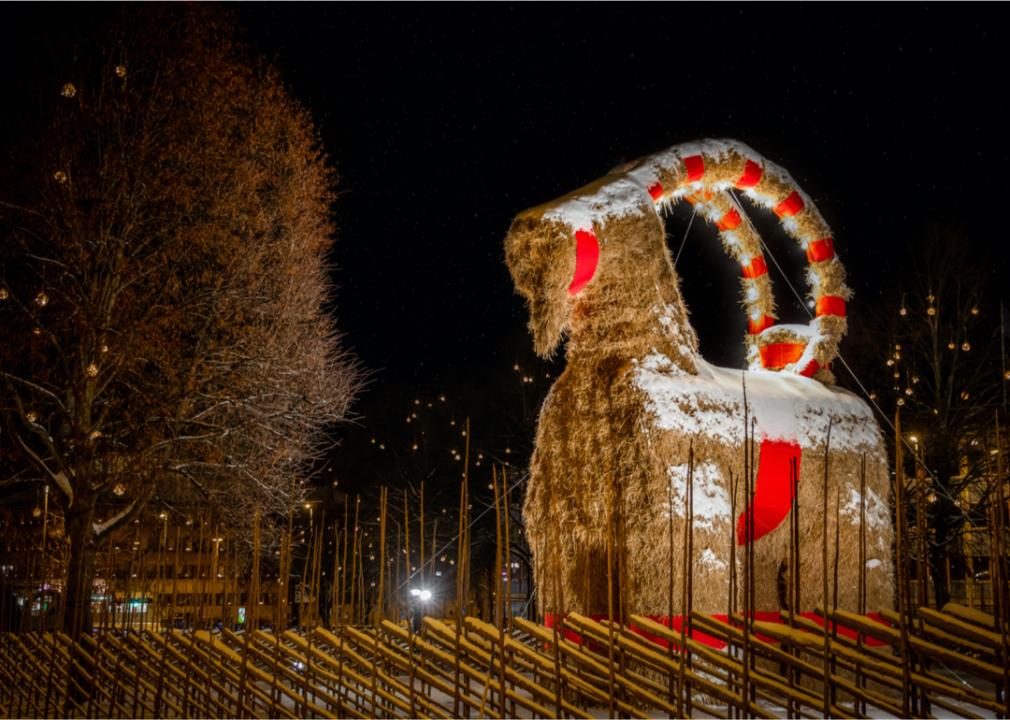
Studio Bankvalvet // Shutterstock
Sweden: Gavle Goat
Swedish Christmas got a major upgrade in 1966 when someone decided to create a massive straw homage to the traditional holiday animal. The Gavle Goat has been a holiday staple ever since. Standing more than 40 feet high and weighing more than 3 tons, it’s become a tradition for locals to try to burn it, run it down with cars, or otherwise sabotage the giant barnyard animal, which is inaugurated on the first Sunday of Advent every year.


